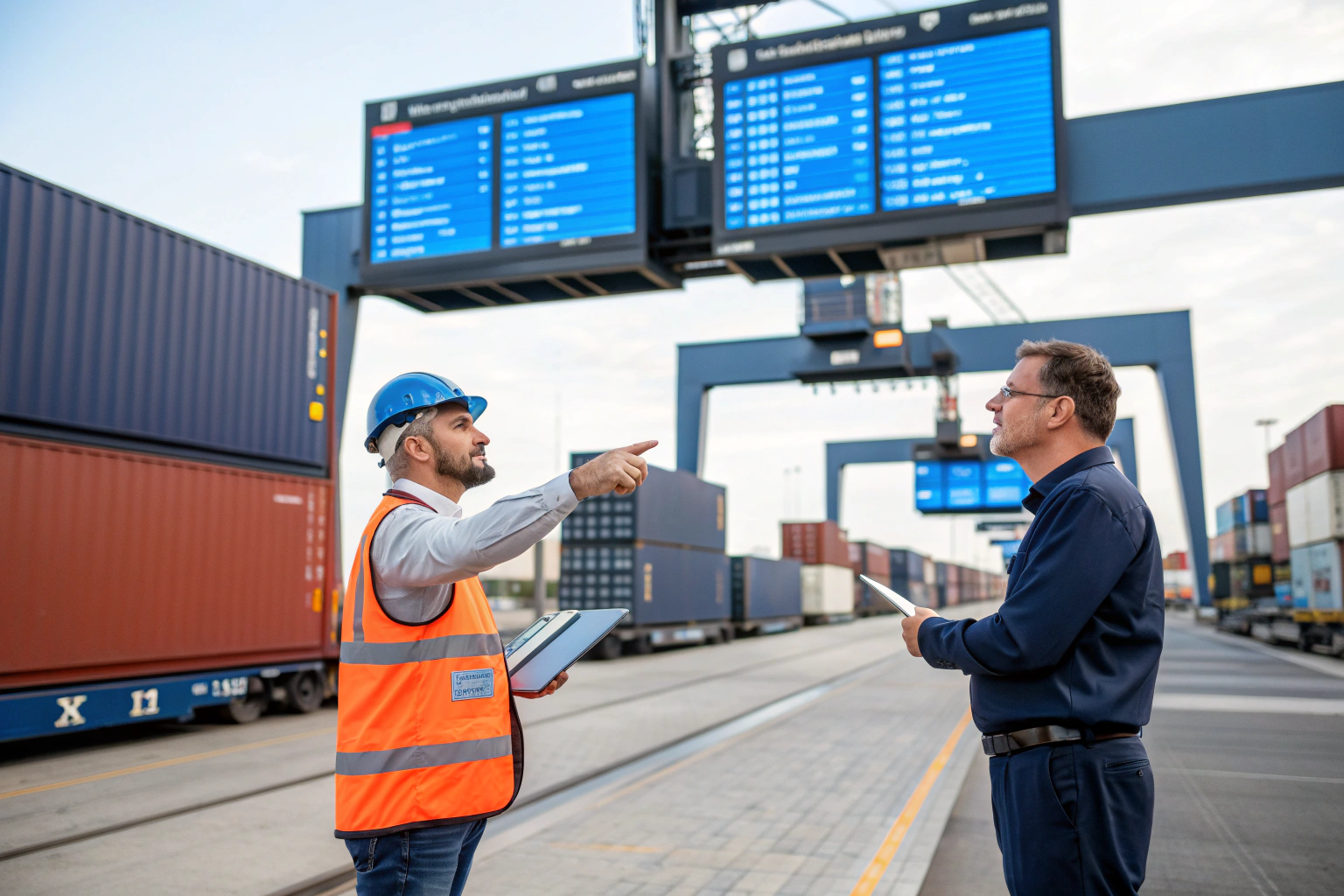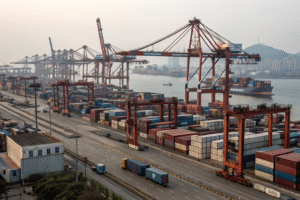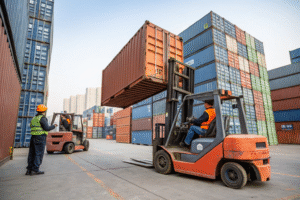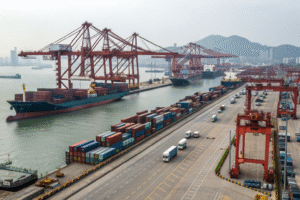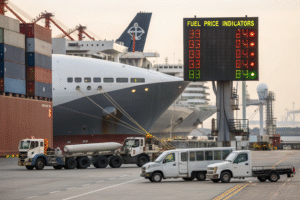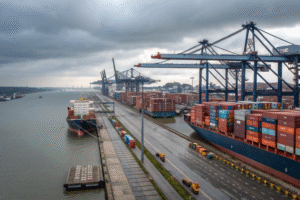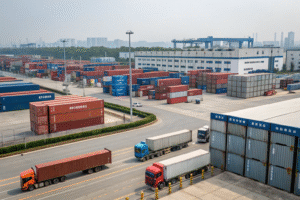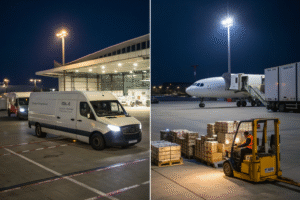Many businesses face a common dilemma when shipping internationally: should they use air, sea, rail, or road transport? Each mode has distinct advantages and limitations. Multi-modal freight services solve this problem by combining different transportation methods to create optimal shipping solutions. This integrated approach delivers significant benefits that single-mode transport cannot match.
Multi-modal freight services offer enhanced flexibility, cost optimization, improved reliability, and broader geographic coverage by strategically combining ocean, air, rail, and truck transportation. This integrated approach creates more efficient and resilient supply chains tailored to specific cargo requirements and business objectives.
Let's explore how combining different transportation modes creates advantages that extend beyond simple cost savings to provide strategic business benefits.
How does multi-modal shipping reduce costs?
Cost efficiency is one of the most compelling reasons businesses choose multi-modal solutions. By strategically combining different transportation modes, freight forwarders can significantly reduce overall shipping expenses while maintaining service quality. The key lies in using each mode for the portion of the journey where it provides the best value.
For example, shipping goods from inland China to Chicago might involve truck transport to a Chinese port, ocean freight to Los Angeles, rail to Chicago, and final truck delivery. This combination leverages ocean shipping's cost-effectiveness for the long Pacific crossing while using rail's efficiency for cross-country movement and trucks for flexible first and last-mile delivery. This approach typically costs 30-50% less than air freight while being much faster than pure ocean transport.
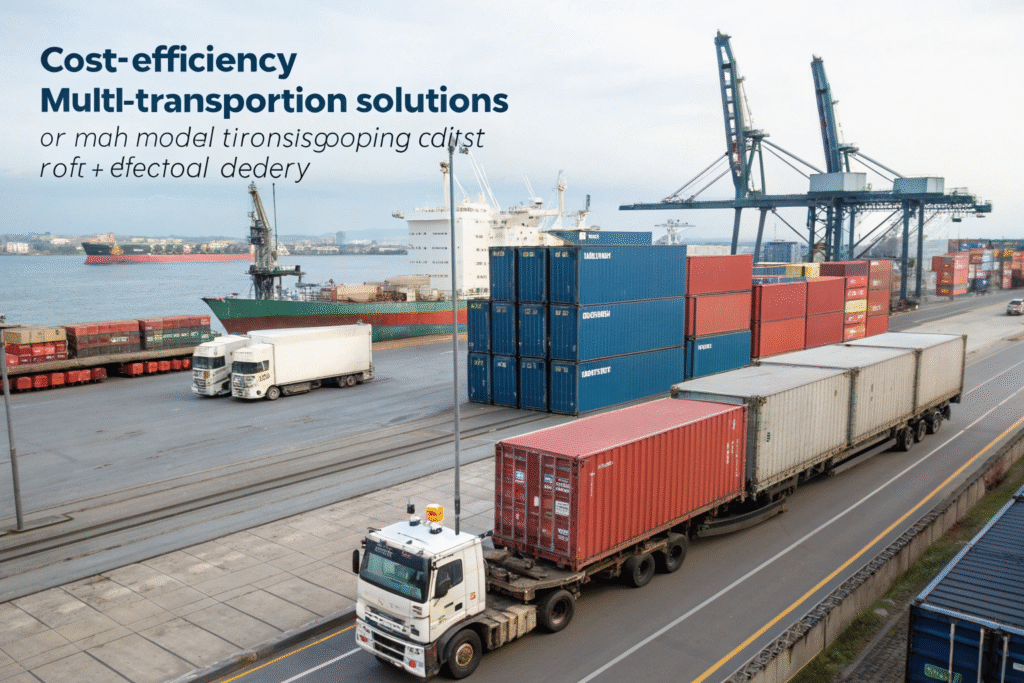
What is the role of intermodal containerization?
Intermodal containerization forms the foundation of cost-effective multi-modal shipping. Standardized containers can be seamlessly transferred between ships, trains, and trucks without unloading the contents. This efficiency reduces:
- Handling costs since containers move between modes with minimal labor
- Cargo damage risk from repeated loading and unloading
- Theft and loss through secure, sealed container transport
- Administrative complexity with single documentation for the entire journey
The seamless transfer between transportation modes makes multi-modal solutions both practical and economical.
How does route optimization lower expenses?
Sophisticated route optimization algorithms analyze countless possible combinations to identify the most cost-effective multi-modal routes. These systems consider factors like fuel costs, tolls, port charges, transit times, and capacity availability across all transportation modes. The result is a tailored routing solution that minimizes expenses while meeting delivery deadlines. This analytical approach often reveals savings opportunities that wouldn't be apparent when considering each transportation mode separately.
How does multi-modal transport improve reliability?
Supply chain disruptions have become increasingly common, making reliability a top priority for businesses. Multi-modal services enhance reliability by providing built-in flexibility and alternative routing options when unexpected events occur. This resilience is particularly valuable in today's volatile global trade environment.
When port strikes, weather events, or capacity shortages disrupt one transportation mode, multi-modal operators can quickly pivot to alternatives. For instance, if West Coast port congestion delays ocean shipments, we might reroute containers to East Coast ports via the Panama Canal or supplement with air freight for time-sensitive components. This adaptability minimizes the impact of disruptions on your supply chain.

What contingency options do multi-modal services provide?
Multi-modal services naturally create multiple contingency pathways. These include:
- Modal substitution during disruptions (air instead of sea, rail instead of truck)
- Port diversification to avoid congested locations
- Route alternatives using different transportation corridors
- Carrier options within each transportation mode
This built-in redundancy means your shipments have pre-planned alternatives when problems arise, reducing dependency on any single route or carrier.
How does single-provider responsibility enhance reliability?
When you use multiple single-mode carriers, coordination problems between different providers often cause delays and confusion. With multi-modal services, one provider manages the entire journey and takes responsibility for coordination between modes. This eliminates finger-pointing between trucking companies, ocean carriers, and rail operators when issues occur. As your single point of contact, we ensure seamless transitions between transportation modes and proactively manage any problems that arise.
How do multi-modal solutions increase flexibility?
Business needs evolve constantly, requiring supply chains that can adapt quickly. Multi-modal services offer unparalleled flexibility to adjust transportation strategies based on changing market conditions, inventory requirements, and customer demands. This adaptability provides significant competitive advantages.
The flexibility extends across multiple dimensions: you can choose different mode combinations based on urgency, adjust routes in response to market conditions, scale capacity up or down as needed, and modify delivery locations based on inventory requirements. This level of adaptability is impossible when locked into single-mode transportation solutions.

How can businesses balance speed and cost effectively?
Multi-modal services enable sophisticated transportation strategy that balances speed and cost according to current business priorities. For example:
- Air-sea combinations move goods quickly by air for the long haul then distribute economically by sea regionally
- Sea-air combinations use economical ocean transport for most of the journey then switch to air for final urgent delivery
- Rail-truck combinations leverage rail efficiency for long distances and truck flexibility for final delivery
This balanced approach ensures you're not overpaying for unnecessary speed nor sacrificing customer service for minimal cost savings.
What inventory management advantages do multi-modal services offer?
Multi-modal transportation supports various inventory strategies by providing multiple speed and cost options. You can maintain lower safety stocks by using faster transportation combinations for replenishment while using slower, cheaper options for regular inventory movements. The ability to choose different transportation profiles for different product categories or order types creates significant inventory optimization opportunities.
How does multi-modal transport expand geographic reach?
Many businesses limit their market expansion because of transportation constraints to certain regions. Multi-modal services overcome these limitations by making virtually any location accessible through strategic mode combinations. This expanded reach opens new market opportunities.
Landlocked regions, remote areas, and emerging markets become economically accessible through creative multi-modal solutions. For example, we can efficiently reach inland European destinations by combining ocean transport to major ports with rail or barge transport to interior locations. Similarly, destinations across the Americas, Asia, and Africa become feasible markets when the right transportation combinations are utilized.

How do multi-modal services access landlocked regions?
Landlocked regions present particular challenges for international trade. Multi-modal solutions overcome these obstacles through:
- Port and gateway diversification using multiple entry points
- Efficient inland transportation via rail and barge networks
- Strategic transloading between ocean containers and domestic equipment
- Customs optimization at various border crossings
This approach makes landlocked destinations in Central Asia, Eastern Europe, Central America, and Africa commercially viable for global trade.
What infrastructure knowledge do multi-modal providers offer?
Successful multi-modal transportation requires deep knowledge of global infrastructure capabilities and limitations. This includes understanding port capacities, rail gauge variations, road weight restrictions, and intermodal terminal efficiencies across different regions. This expertise ensures we select transportation combinations that work seamlessly within each region's physical infrastructure, avoiding bottlenecks and delays that might not be apparent to those without local knowledge.
Conclusion
Multi-modal freight services represent the evolution of international logistics from simple transportation to sophisticated supply chain management. By strategically combining different transportation modes, businesses gain cost efficiency, improved reliability, operational flexibility, and expanded market reach. These advantages translate directly to competitive benefits including lower operating costs, better customer service, and reduced supply chain risk. As global trade becomes more complex, the ability to leverage multiple transportation modes through an integrated provider becomes increasingly essential for business success in international markets.
